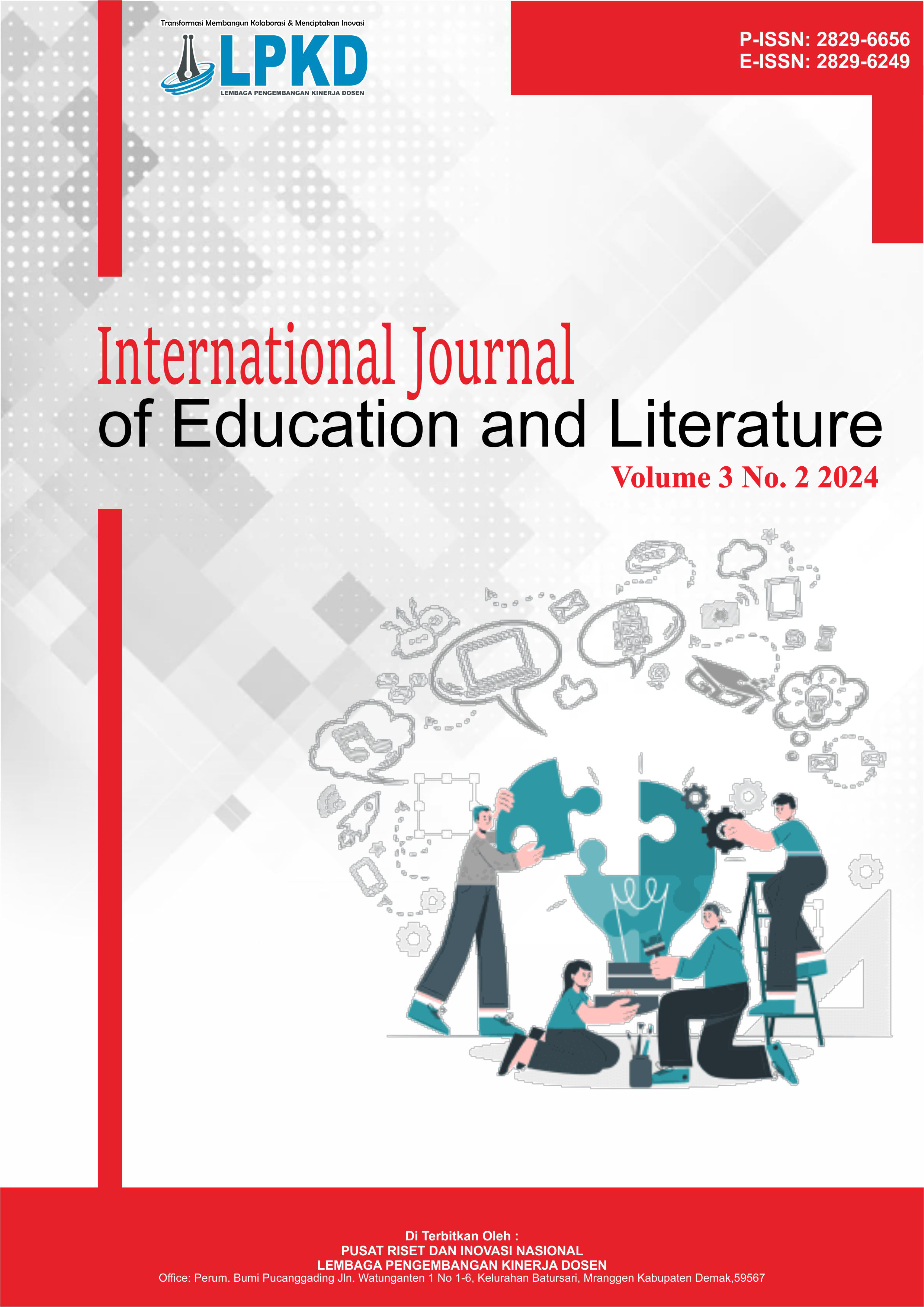Analysis of Medan State University Students' Perceptions of LGBT Deviant Behavior Viewed from an Islamic Religious Perspective
DOI:
https://doi.org/10.55606/ijel.v3i2.104Keywords:
Student Perceptions, LGBT Behavior, Islamic Religious PerspectiveAbstract
LGBT identities can emerge at any stage of life. However, adolescents, particularly university students who are in the process of self-discovery, are often more susceptible to this phenomenon. This research was designed to analyze student perceptions of LGBT behavior, with a focus on the Islamic religious perspective. The study employs quantitative descriptive research methods, conducted through the distribution of questionnaires to a sample consisting of student representatives from each faculty at Medan State University. Out of a total of 46 respondents, the majority stated that LGBT behavior is forbidden according to Islamic teachings. The respondents believe that the presence of LGBT individuals in the campus environment can influence Islamic values. Students suggest that the LGBT phenomenon requires special handling from an Islamic perspective. Students do not support initiatives aimed at providing protection for LGBT individuals. They feel the need to strengthen rules and regulations in their environment to prohibit activities or organizations related to LGBT.
References
Ali, D.M. (2018). ISLAMIC LAW. Jakarta : PT. King Grafindo.
Andani, RP, & Khuluq, AH (2023). THE ROLE OF MUSLIM FAMILIES IN PREVENTING SEXUAL DEVIATION (LGBT) AMONG ADOLESCENTS IN NATUNA DISTRICT. Al-Usariyah: Journal of Islamic Family Law, 1(2), 43–66. Taken fromhttps://ejournal.stdiis.ac.id/index.php/al-usariyah/article/view/410
Anita, A., Woferst, R. (2022). RELATIONSHIP OF KNOWLEDGE WITH STUDENT PERCEPTIONS REGARDING LESBIAN, GAY, BISEXUAL AND TRANSGENDER (LGBT). Journal of Nursing Science. 10(1). 45-59.
Canu, U. and Tahali. A. (2023). THE LGBT PHENOMENON IN INDONESIA FROM THE PERSPECTIVE OF HUMAN RIGHTS AND ISLAMIC LAW. ALMASHADIR: Journal of Islamic Law and Economics. 5(2). 96-111.https://doi.org/10.31970/almashadir.v5i2.157
Cresswell, J. W., & Cresswell, J. D. (2014). Research design: Qualitative, quantitative, and mixed methods approaches (4th ed.). Singapore : Sage Publications.
Djubaedah, N. (2010). ADULTERY IN INDONESIAN LEGISLATION IS REVIEWED FROM ISLAMIC LAW. Jakarta : Kencana Prenada Media Group.
Fikri, Sunuwati, & Budiman. (2022). ISLAMIC LAW AND HUMAN RIGHTS. Parepare: Nusantara Press.
Firmansyah, I. et al. (2022). LGBT in Indonesia: Human Rights Dilemma and the Urgency of Sentencing Reform. Scientific Journal "Advocacy". 10(02). 193-205.https://doi.org/10.36987/jiad.v10i2.2677
Fitrianti, A., Amirudin, & Muzaki, IA (2022). Perceptions of Islamic Religious Education Students at Singaperbangsa University Karawang in 2018 regarding the rise of LGBT in Indonesia. Intiqad: Journal of Islamic Religion and Education, 14(2), 240-255.https://doi.org/10.30596/10487
Hidayani, WR (2020). SEXUALLY TRANSMITTED INFECTIONS (STIs) AND LESBIAN, GAY, BISEXUAL AND TRANSGENDER (LGBT): EPIDEMIOLOGY AND KNOWLEDGE OF HIGH SCHOOL STUDENTS. Banyumas : CV. Editor's Prime Pen.
Husaini, A. (2021). ABOUT THE UNDERSTANDING OF GENDER EQUALITY IN THE ERA OF GLOBALIZATION. Depok: Adabi Press.
Isnaini, N. (2024). Lesbian, Gay, Bisexual and Transgender (LGBT) in Muslim Societies. Al Ershad: Journal of Islamic Studies, 3(1), 1–8.https://doi.org/10.54150/alirsyad.v3i1.251
Ministry of Health of the Republic of Indonesia. (2017). ESTIMATED NUMBERS OF THE KEY HIV POPULATION IN INDONESIA 2016. Jakarta: Indonesian Ministry of Health.
Lydia Anderson, TFJMKM and ZS (2021, November 4). New Household Pulse Survey Data Reveals Differences between LGBT and Non-LGBT Respondents During COVID-19 Pandemic. United States Census Bureau.
Pebriansyah Ariefana. (2015, July 6). How Many Gays & Lesbians in Indonesia? Suara.Com.
Rahmawati, E. (2023). ISLAMIC LAW CONCERNING LGBT CONDUCT.Journal of Islamic Religious Teacher Professional Education. 3(3).150-156.
Ramadhani, R. (2020). Moral Creed Education as a Solution to LGBT Prevention. Al-Adabiya: Journal of Culture and Religion, 15(01), 47-68.https://doi.org/10.37680/adabiya.v15i01.223
Retnasari, F. (2014). THERE IS IN THE OUTER CIRCLE THE STORY OF YOUNG PEOPLE'S SEXUALITY. Muslim Intellectual Media Journal. 13(2). 67-78.
Siregar, HL, & Nurmayani, N. (2022). Analysis of Social Care Character Development in Islamic Religious Education Courses. Randwick International of Education and Linguistics Science Journal, 3(3), 527-536.https://doi.org/10.47175/rielsj.v3i3.541
Surianti, S. (2021). RELIGION AND MINORITY GROUPS: THE CASE OF LGBT. Pulpit Journal: Muslim Intellectual Media and Spiritual Guidance, 7(2), 145-163.https://doi.org/10.47435/mimbar.v7i1.772
Tripuspita, A, & Aprilia, A. (2023). Islamic perspective on LGBT deviant behavior for the younger generation. Journal Homepage. 13(1). 67-101.
Tarigan, RS and Harahap N. (2022). The Influence of Globalization on the Rise of LGBT in Indonesia Through the Social Media Networks Instagram and Tiktok. ISO Journal: Journal of Social and Political Sciences. 2(2). 159-164.https://doi.org/10.53697/iso.v2i1
Downloads
Published
How to Cite
Issue
Section
License
Copyright (c) 2024 International Journal of Education and Literature

This work is licensed under a Creative Commons Attribution-ShareAlike 4.0 International License.







